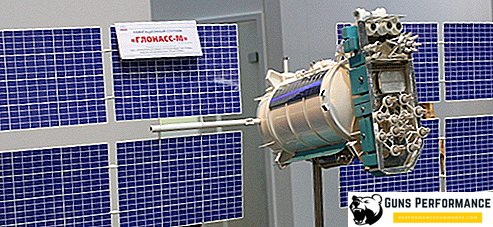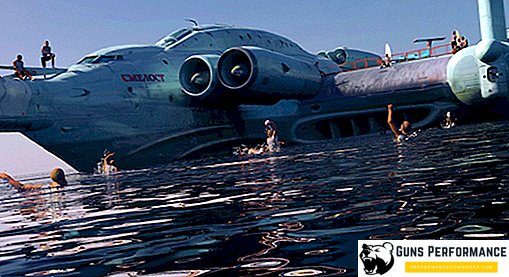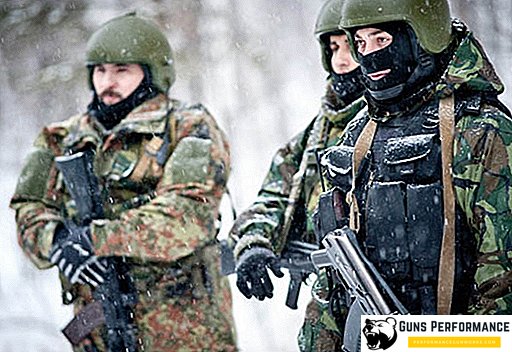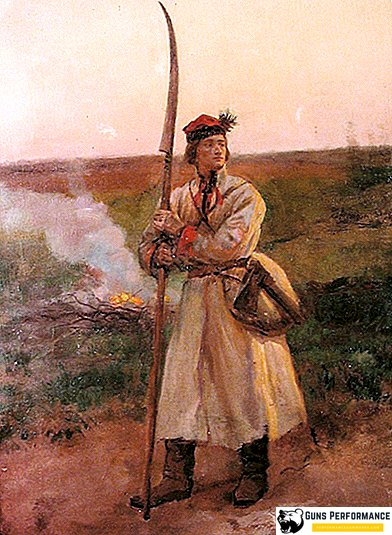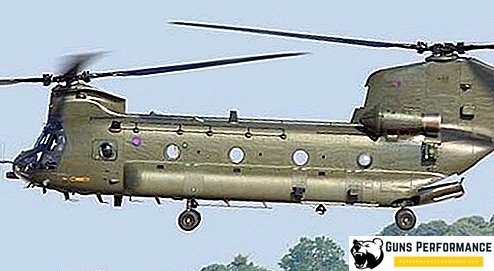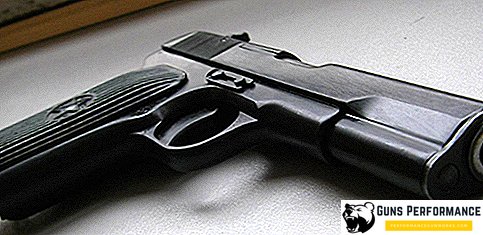Work on improving the Il-2 attack aircraft in order to increase its bomb load, as well as defensive and offensive weapons began in 1940. Then, after successfully completing the tests of the attack aircraft, it was decided at the experimental design bureau of S.V. Ilyushin to begin developing a heavy attack aircraft to perform a wider range of tasks. But with the beginning of the Great Patriotic War, all these works had to be turned off.

The development of the new attack aircraft was resumed only in early 1943. Then the team of the Design Bureau S. V. Ilyushin was tasked to develop just such a plane, which was conceived before the war, in 1940. The development of a new attack aircraft, called the IL-8, was going at high speed, and by the middle of 1943 the first prototype had made its first flight. Simultaneously with the development of the IL-8, the main purpose of which was to create a heavy attack aircraft with an increased bomb load, work was also being done to improve the flight characteristics of the Il-2 attack aircraft. It is this second development path that ultimately led to the creation of the IL-10.
Soon, many of the characteristics of the IL-10 began to surpass the characteristics of its "elder brother" - a heavy attack aircraft IL-8. So, some design solutions that were used in the development of the IL-10, successfully "migrated" and in the design of the IL-8 when correcting some of the shortcomings of the latter.
After the IL-8 tests were delayed due to serious engine problems and minor problems, the IL-10 aircraft confidently took the lead on development progress. However, the first flight of the machine was carried out only in April 1944 - about a year after the first flight of the prototype attack aircraft Il-8. Nevertheless, it was IL-10 that, after passing state tests in a phenomenally short time (only two weeks), was put into mass production by the end of May 1944. It is noteworthy that during the tests a training air battle was conducted between the IL-10 and the best at that time domestic La-5FN fighter.
In total, by May 1945, a little more than six hundred Il-10 attack aircraft were sent to the army.
Participation attack aircraft IL-10 in World War II
The first Il-10 attack aircraft entered service with the 1st Reserve Aviation Brigade (Zab), based in the city of Kuybyshev. This city for the deployment of units was not accidental: it was here that the main training center for the preparation of attack aviation pilots was located, and the overwhelming part of the Il-2 attack aircraft, and then the Il-10, was also produced here. At the beginning, the instructors, who were to retrain for a new attack aircraft and then the flight and technical staff of the army in the army, were retraining.
In the autumn of 1944, the retraining of the brigade personnel began. However, due to design flaws and frequent accidents (the most common was the occurrence of a fire on board the aircraft), which led to tragic consequences, the mass production of IL-10 was suspended until the troubleshooting. At this time, classes were held only on the ground, because no one wanted to endanger the lives of experienced instructor pilots.

In November, for retraining, the first combat unit arrived in Kuybyshev, the 78th Guards Ground Attack Aviation Regiment (Gshap), and in January, practical training sessions for personnel began.
It should, however, be said that there was very little time left for practical training, so by the end of the retraining the 78th flight crew had an average hour of raids on the IL-10 and 6 landings, which was not enough. The results of the training bombing were also found to be unsatisfactory, and in fact these were experienced crews who skillfully owned an Il-2 attack aircraft. However, in January 1945, two assault air regiments were retrained on the IL-10 - in addition to the 78th mentioned above, also the 108th Guards.
In February 1945, it was planned to retrain five assault air regiments. However, this plan failed, mainly due to the short time spent on training personnel. It is precisely the factor of insufficient training that caused a number of accidents and equipment failures. But in fairness it should be noted that the role of technology in most of the incidents was not traced at all, since by that time the team of the experimental design bureau S.V. Ilyushin managed to correct most of the shortcomings of the IL-10 design.
To take part in hostilities against Germany, the IL-10 had time only as a part of three aviation regiments: the 571st assault, 108th and 118th assault guards.
The 571st Assault Aviation Regiment, part of the 224th Assault Aviation Division (Shad), arrived at the location on a new vehicle on April 9, 1945. The 108th Guards Ground Attack Aviation Regiment took part in hostilities on a new technology on April 16, 1945. And the 118th Gshap, located in Shaulyai, carried out combat missions on the IL-10 only on May 8, 1945, a day before the German grouping surrendered on the Liepaja bridgehead, against which it was deployed.
During the fighting, the new attack aircraft showed itself equally well, both when carrying out air-strike attacks on the enemy's manpower and equipment, and in repelling the attacks of enemy fighters. In total, in the middle of April, the 571st cap lost only a few aircraft, while inflicting much greater damage on the enemy. The merits of the regiment, and, consequently, the quality of the Il-10 attack aircraft, are marked by gratitude to the personnel of the 571st cap from the commander of the 60th army of General P. A. Kurochkin. The end of April-beginning of May 1945 was the most “hot” time for the new attack aircraft. It is during this period that a large number of losses are incurred for aircrew and technology, mainly, of course, due to the actions of the enemy. However, according to reviews of pilots flying the IL-10, the car confidently behaved in the air, and its maneuverability, better than that of the IL-2, more than once saved the pilot in difficult situations. In total, the IL-10 took part in the war against Germany from mid-April to May 8, 1945.
Immediately after the end of the hostilities, the commission revealed a serious deterioration of the engines of the IL-10 aircraft, which made it necessary to take serious measures: the aircraft were banned from flights - good, the war was over, and the situation allowed it.

In the period from the end of May to the beginning of August 1945, the Ilyushin Design Bureau team took urgent measures to finalize the aircraft, as well as to correct the faults discovered in the process of the combat use of the IL-10.
By the beginning of the war with Japan from all Soviet aviation units in the Far East, only the 26th ground attack aviation regiment was armed with the Il-10 attack aircraft. In the first days of the fighting, the regiment airplanes were used mainly against enemy ships and their anti-aircraft guns. It was not until the middle of August 1945 that the regiment began operating against the ground forces of the enemy. As on the German front, here the IL-10 was highly praised for its fighting qualities.
After World War II
After the capitulation of Japan and the end of the Second World War, the mass production of the IL-10 lasted another 5 years. In total, as of 1950, about 4,500 IL-10 aircraft were produced and approximately 280 of its training modifications, which received the symbol IL-10. Also, mass production of attack aircraft was established in Czechoslovakia at the Avia plant. There, under the name of B-33, the aircraft was produced from 1951 to 1955. In total, the Avia plant mass-produced about 1,200 airplanes. It was Czechoslovakia that supplied the B-33 to other countries of the socialist camp, for example, to Poland, Romania and Hungary.
In 1950, the war in Korea began. The DPRK army was equipped mainly with Soviet weapons. Took part in the fighting on the side of North Korea and the Soviet pilots. However, the course of the war, initially successful for the DPRK troops, then abruptly changed in the opposite direction.
In total, 93 Il-10 attack aircraft took part in the North Korean air force. However, due to the lack of proper maintenance and as a result of the opposition of the enemy's air force, by the autumn of 1950 only about 20 combat-ready machines remained in the ranks.
In connection with the events in Korea, already in 1951, the Il-10 attack aircraft was modified, in particular, the pilot’s armor protection was strengthened, the area of guided surfaces was increased, and a more durable armored glass was installed. The new modification received the designation IL-10M. During the period from 1951 to 1955, about 150 IL-10M were mass-produced.
In 1955, the production of the Il-10 attack aircraft was discontinued, and a year later the aircraft was removed from the arsenal of the Soviet Air Force, since by this time new models of aircraft had appeared, moreover, jet ones. In addition, preference was now given to fighter-bomber rather than to specialized attack aircraft.

Overview of the IL-10 aircraft and specifications
IL-10 is an all-metal monoplane. The crew of the aircraft, as a rule, consists of two people - a pilot and an arrow. During the development of the IL-10, the statistics of the defeat of the pilot and the gunner on the Il-2 attack aircraft were fully studied. This fact explains and causes the main differences in the designs of both aircraft. So, during the design of the IL-10, it was decided to include in the armored hull, which previously housed only the cockpit, and the gunner’s cabin. Thus it was possible to significantly increase the safety of the crew and, ultimately, the firepower of the aircraft, not to mention the protection of the rear hemisphere.
Also, compared with the IL-2, the thickness of the engine hood was seriously increased, which significantly affected its protection. The caliber of the defensive armament of the IL-10 aircraft was increased from 12.7 to 20 millimeters. In addition, it is impossible not to indicate that the maneuverability of the attack aircraft was also seriously improved, as the situation required.

Characteristics of the Il-10 attack aircraft:
- Wingspan, m - 13.4
- Length, m - 11.1
- Height, m - 4,2
- Wing area, m2 - 30
- Weight, kg:
- empty aircraft - 4650
- normal takeoff - 6300
- Engine type - 1 PD Mikulin AM-42
- Power, hp:
- flight - 1 x 1750
- takeoff - 1 x 2000
- Maximum speed, km / h:
- on the ground - 507
- at a height of 551
- Cruising speed, km / h - 436
- Practical range, km - 800
- Rate of climb, m / min - 625
- Practical ceiling, m - 7250
- Crew, people - 2
- Armament:
- two 23-mm guns ВЯ-23 or НС-23 (mounted on the wing) and two 7.62-mm ShKAS machine guns;
- one 20 mm cannon UB-20 or 12.7 machine gun UBS behind up to 8 RS-82 or RS-132
- Bomb load:
- the normal variant is 400 kg (2 FAB-100 in bomb compartments and 2 FAB-100 on external hangers);
- handling - 600 kg (2 FAB-50 in the compartments and 2 FAB-250 on external hangers).
Conclusion
IL-10 "managed" to take part in hostilities only at the very final stage of the Second World War. However, being developed in early 1944 and tested in the shortest possible time, in April 1945 the plane completely “plunged” into combat work. Heavy fighting in Poland and East Germany became a truly serious test for the Il-10 attack plane, from which it emerged with honor.
After the victorious completion of the Great Patriotic War, the aircraft was urgently modified to correct problems, and less than three months later, in August 1945, the regiment, armed with the Il-10 attack aircraft, worked wonders in the fight against Japan, causing significant damage only the ground forces of the enemy, but also his fleet.

And 5 years after the end of the Second World War, the IL-10 was again in the thick of things, this time in the furnace of the Korean War. And again this plane showed itself only from the best side, and participating in battles with more modern American cars.
As an in-depth modification of the illustrious IL-2, the attack aircraft earned deserved love in the army, despite its capricious character at first. After such bright and heroic pages of its biography, the IL-10 rightfully occupies an honorable place among the truly great airplanes created in the Soviet Union.


